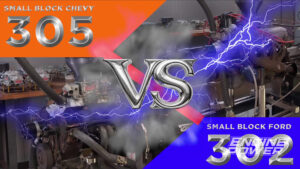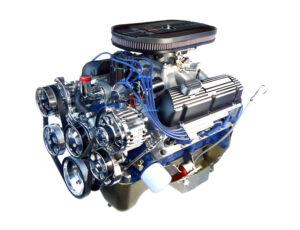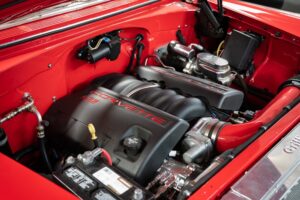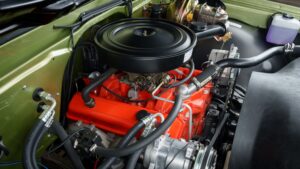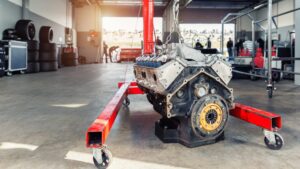Chevy 305 vs. Ford 302: An American V8 Showdown

Table of Contents
A Brief History
Both the Chevy 305 and Ford 302 emerged during the 1960s and 70s when car manufacturers responded to demands for fuel efficiency alongside performance. Chevrolet launched the 305 in 1976 as a way to meet new emissions regulations while still delivering V8 power. With a 5.0L displacement, the 305 was intended to offer decent performance in a more fuel-conscious package, often finding a home in popular models like the Camaro, Caprice, and Monte Carlo.
Ford, on the other hand, introduced the 302 in 1968 as part of its small-block Windsor family. Also with a 5.0L displacement, the Ford 302 quickly became synonymous with power and agility, especially when paired with legendary Mustangs and pickups. As a durable, high-revving engine, the 302 has earned its place in automotive lore, especially among Ford loyalists.
Power and Performance
When it comes to power, the Ford 302 has a bit of an edge. It produced higher horsepower than the Chevy 305, especially in its high-performance versions, which saw extensive use in Mustangs and other muscle cars. Early 302 engines were capable of reaching up to 290 horsepower, particularly in the Boss 302 variant, designed for competitive racing in the late ‘60s. For everyday builds, a stock Ford 302 produced around 210 to 230 horsepower in its prime.
In comparison, the Chevy 305 was designed more for economy than outright power. Although it was dependable, stock versions of the 305 generally produced around 160 to 180 horsepower. However, the 305 did see more powerful variants later on, especially with the advent of fuel injection in the late ‘80s, bumping horsepower to around 215. For those looking to modify, the 305’s power can be increased with performance parts, but it lacks the high-revving nature that made the 302 a favorite among Ford enthusiasts.
Build Potential and Aftermarket Support
If you’re considering which engine to choose for a project car, it’s essential to think about aftermarket support and modification potential. Both engines have robust aftermarket communities, but the Ford 302 has an edge due to its popularity among racers and builders. The 302 is a staple in the Mustang and hot-rodding communities, which means there’s no shortage of aftermarket parts, high-performance upgrades, and specialized tuners available. From carburetors and intake manifolds to superchargers and turbo kits, the options are vast for making a Ford 302 reach impressive horsepower figures.
The Chevy 305, while less popular, still has solid aftermarket support, especially for those looking to keep things simple and budget-friendly. One of the biggest appeals of the 305 is its compatibility with the Chevrolet small-block family, meaning many components from other small-blocks, such as the more powerful 350, can be used. However, if you’re aiming for big power numbers, the 305 can start to show its limitations, as its bore size restricts airflow compared to engines like the Ford 302.
Reliability and Durability
Both engines are known for reliability, though each has its quirks. The Ford 302 has a reputation for being a durable, high-revving engine with a well-supported aftermarket that can make it nearly bulletproof with the right components. Ford’s 302 has shown itself to be a versatile workhorse in a wide variety of applications, from muscle cars to trucks.
The Chevy 305, while also reliable, has a reputation as a “smaller” version of the beloved Chevy 350. It’s a stable engine that performs well under regular driving conditions but has some limitations when it comes to high-performance builds. With regular maintenance, the 305 can still deliver plenty of life, but many builders find themselves drawn to the 350 or other small-block Chevy options when more power is desired.
Final Thoughts
In the end, choosing between the Chevy 305 and the Ford 302 boils down to your project goals, brand loyalty, and budget. If you’re looking for a reliable daily driver with moderate power and great compatibility with GM vehicles, the 305 is a solid, cost-effective choice. However, if you’re aiming to squeeze out more performance and enjoy a thriving aftermarket community, the Ford 302 might be more up your alley.

